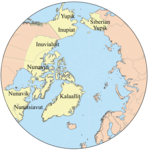Eskimo is an exonym that refers to two closely related Indigenous peoples: Inuit and the Yupik of eastern Siberia and Alaska. A related third group, the Aleut, who inhabit the Aleutian Islands, are generally excluded from the definition of Eskimo. The three groups share a relatively recent common ancestor, and speak related languages belonging to the family of Eskaleut languages.
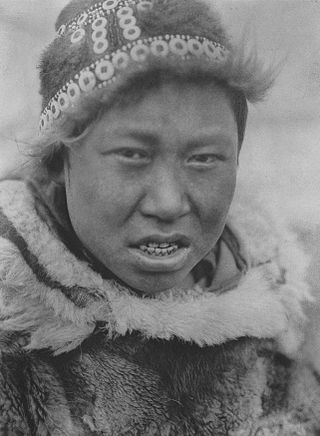
The Yupik are a group of Indigenous or Aboriginal peoples of western, southwestern, and southcentral Alaska and the Russian Far East. They are related to the Inuit and Iñupiat. Yupik peoples include the following:
In Inuit religion, Silap Inua or Sila is similar to mana or ether, the primary component of everything that exists; it is also the breath of life and the method of locomotion for any movement or change. Silla was believed to control everything that goes on in one's life.

The Eskaleut, Eskimo–Aleut or Inuit–Yupik–Unangan languages are a language family native to the northern portions of the North American continent, and a small part of northeastern Asia. Languages in the family are indigenous to parts of what are now the United States (Alaska); Canada including Nunavut, Northwest Territories, northern Quebec (Nunavik), and northern Labrador (Nunatsiavut); Greenland; and the Russian Far East. The language family is also known as Eskaleutian, or Eskaleutic.

Chukchi, also known as Chukot, is a Chukotko–Kamchatkan language spoken by the Chukchi people in the easternmost extremity of Siberia, mainly in Chukotka Autonomous Okrug. The language is closely related to Koryak. Chukchi, Koryak, Kerek, Alutor, and Itelmen form the Chukotko-Kamchatkan language family. There are many cultural similarities between the Chukchis and Koryaks, including economies based on reindeer herding. Both peoples refer to themselves by the endonym Luorawetlat, meaning "the real people". All of these peoples and other unrelated minorities in and around Kamchatka are known collectively as Kamchadals.
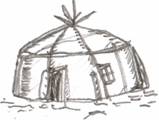
A Yaranga is a tent-like traditional mobile home of some nomadic Northern indigenous peoples of Russia, such as Chukchi and Siberian Yupik.

Siberian Yupiks, or Yuits, are a Yupik people who reside along the coast of the Chukchi Peninsula in the far northeast of the Russian Federation and on St. Lawrence Island in Alaska. They speak Central Siberian Yupik, a Yupik language of the Eskimo–Aleut family of languages.

Sirenik Yupik, Sireniki Yupik, Sirenik, or Sirenikskiy is an extinct Eskimo–Aleut language. It was spoken in and around the village of Sireniki (Сиреники) in Chukotka Peninsula, Chukotka Autonomous Okrug, Russia. The language shift has been a long process, ending in total language death. In January 1997, the last native speaker of the language, a woman named Vyjye, died. Ever since that point, the language has been extinct; nowadays, all Sirenik Eskimos speak Siberian Yupik or Russian. Despite this, censuses as late as 2010 report up to 5 speakers of Sirenik.
Central Siberian Yupik, is an endangered Yupik language spoken by the Indigenous Siberian Yupik people along the coast of Chukotka in the Russian Far East and in the villages of Savoonga and Gambell on St. Lawrence Island. The language is part of the Eskimo-Aleut language family.

The Yupik languages are a family of languages spoken by the Yupik peoples of western and south-central Alaska and Chukotka. The Yupik languages differ enough from one another that they are not mutually intelligible, although speakers of one of the languages may understand the general idea of a conversation of speakers of another of the languages. One of them, Sirenik, has been extinct since 1997.
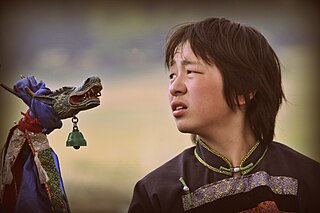
A large minority of people in North Asia, particularly in Siberia, follow the religio-cultural practices of shamanism. Some researchers regard Siberia as the heartland of shamanism.
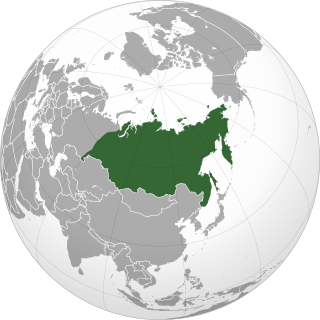
Siberia is a vast region spanning the northern part of the Asian continent and forming the Asiatic portion of Russia. As a result of the Russian conquest of Siberia and of the subsequent population movements during the Soviet era (1917–1991), the modern-day demographics of Siberia is dominated by ethnic Russians (Siberiaks) and other Slavs. However, there remains a slowly increasing number of Indigenous groups, accounting for about 5% of the total Siberian population, some of which are closely genetically related to Indigenous peoples of the Americas.

Traditional Alaskan Native religion involves mediation between people and spirits, souls, and other immortal beings. Such beliefs and practices were once widespread among Inuit, Yupik, Aleut, and Northwest Coastal Indian cultures, but today are less common. They were already in decline among many groups when the first major ethnological research was done. For example, at the end of the 19th century, Sagdloq, the last medicine man among what were then called in English, "Polar Eskimos", died; he was believed to be able to travel to the sky and under the sea, and was also known for using ventriloquism and sleight-of-hand.
A legend prevalent among the Chukchi people of Siberia tells of a chief Krachai, who fled with his people across the ice to settle in a northern land. Though the story may be mythical, the existence of an island or continent to the north was lent credence to by the annual migration of reindeer across the ice. As well as the appearance of slate spear-points washed up on Arctic shores, made in a fashion unknown to the Chukchi. Linguist Michael E. Krauss has recently presented archaeological, historical, and linguistic evidence that Wrangel Island was a way station on a trade route linking the Inuit settlement at Point Hope, Alaska with the north Siberian coast, and that the coast may have been colonized in late prehistoric and early historic times by Inuit settlers from North America. Krauss suggests that the departure of these colonists was related to the Krachai legend.

Reindeer in Siberian shamanism reflect the cultural, as well as the economic, relationship between the native peoples of Siberia, a region of Northern Asia, and the reindeer that live there. It involves the nomadic reindeer herders, those that hunt wild reindeer and those who maintain domesticated ones. Their religious beliefs reflect the spiritual philosophy of shamanism, and their traditions often involve reindeer in several steps of the process of practicing their religion.
Sireniki is a village (selo) in Providensky District of Chukotka Autonomous Okrug, in the Far Eastern Federal District of Russia. Population: 469 (2010 Census); Municipally, Sireniki is subordinated to Providensky/Providenia Municipal District. In 2010, a law was passed abolishing the municipal rural settlement of Sireniki. The village continues to exist, but is now municipally part of Providenia Urban Settlement.

The Naukan, also known as the Naukanski, are a Siberian Yupik people and an Indigenous people of Siberia. They live in the Chukotka Autonomous Region of eastern Russia.
The Chaplino dialect is a dialect of the Central Siberian Yupik language spoken by the indigenous Eskimo people along the coast of Chukotka Autonomous Okrug in the Russian Far East, in the villages of Novoye Chaplino, Provideniya, Uelkal and Sireniki. The Chaplino dialect is named after the village of Chaplino. The Chaplino dialect is spoken by the majority of Russian Yuits.

Chukchi cuisine refers to subsistence foods and their methods of preparation used by the Chukchi people, one of the indigenous peoples of Siberia.
The Goose Wife is a mythical female character that appears in tales from the Inuit and other ethnic groups that dwell across the circumpolar Arctic region. The usual story is that the geese alight on land, become women by taking off their goose-skins and bathe in a lake. However, they are unaware that a human hunter is spying on them, and he steals the goose-skin of one of them, forcing her to be his wife. Due to the great similarities between both characters, the goose wife has been compared to the swan maiden, another female that alternates between human and bird forms.













